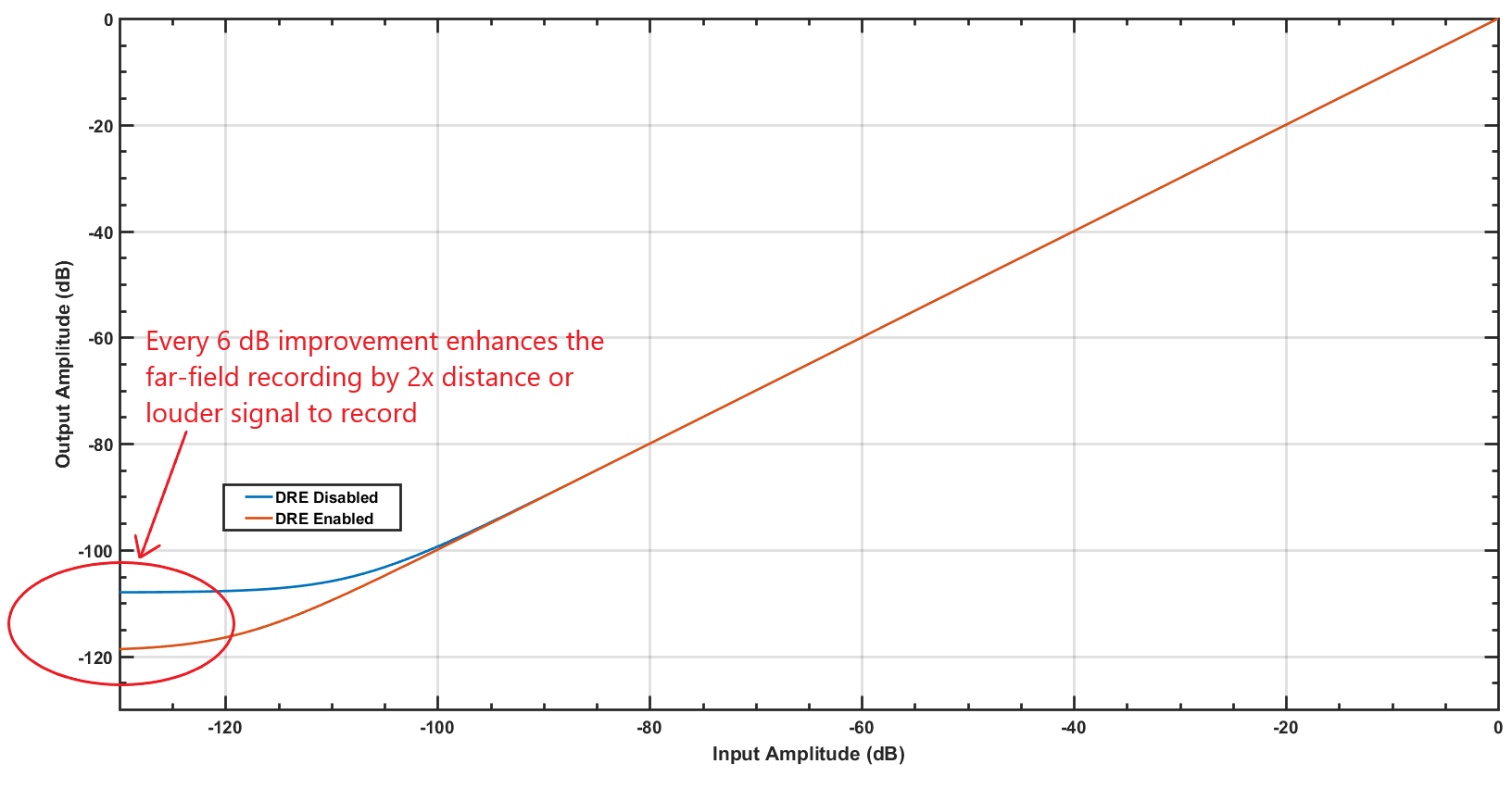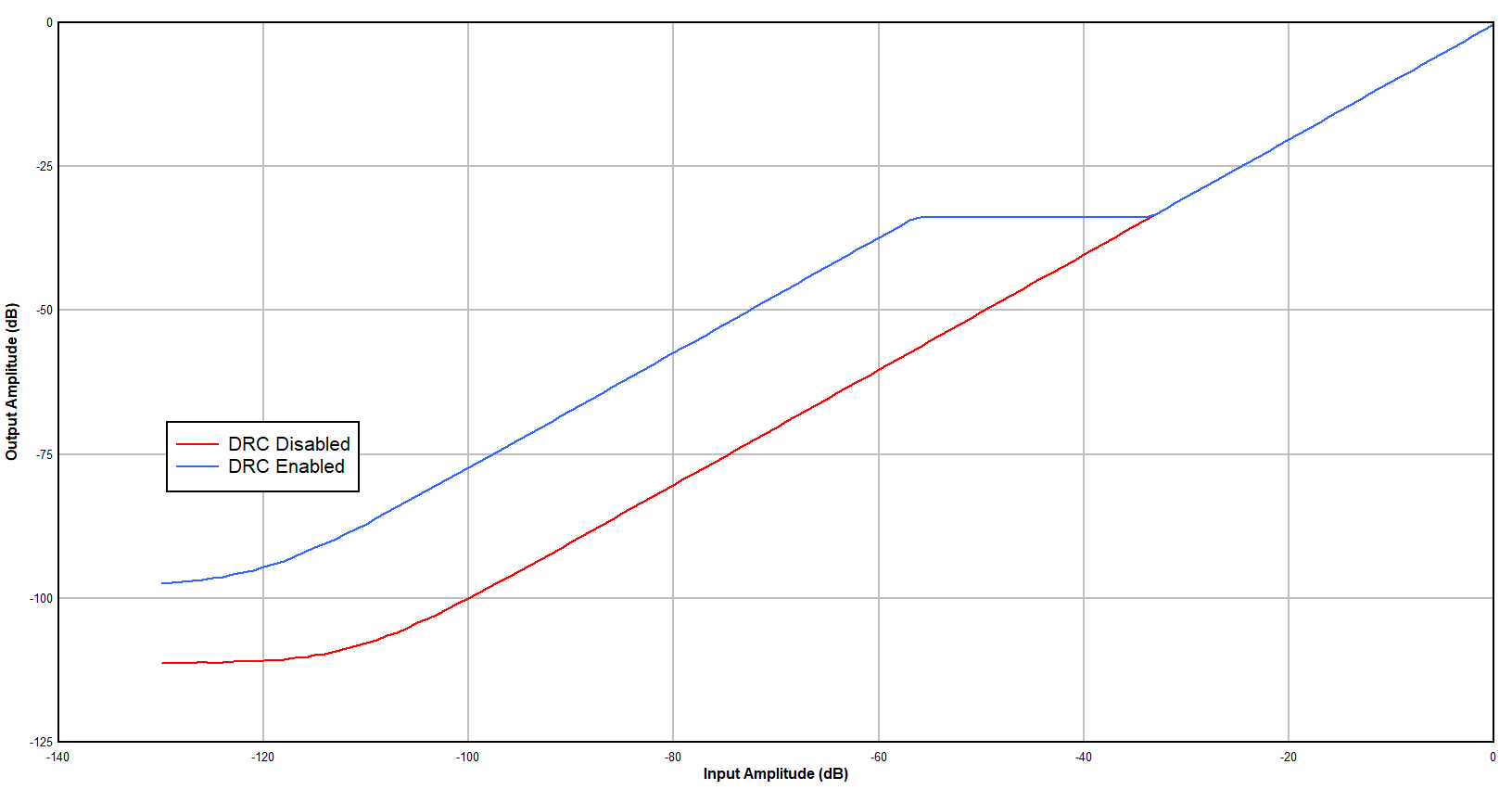SBAA491A November 2021 – April 2022 PCM5120-Q1 , PCM6120-Q1 , TLV320ADC5120 , TLV320ADC6120
1 Introduction
TLV320ADC5120/PCM5120-Q1 and TLV320AD6120/PCM6120-Q1 devices from TI’s Audio ADC portfolio features an algorithm called Dynamic Range Enhancer (DRE) that can be used to improve the far-field recording performance by improving the dynamic range of the ADC channel at low signal levels. The DRE is a digitally-assisted algorithm that dynamically adjusts the front-end programmable gain amplifier (PGA) to improve the signal-to-noise ratio of low-level signals while preventing high-level signals from saturating the PGA and ADC. Far-field recording performance can also be improved by using a high PGA gain, but it can degrade near-field recording performance since a dynamic change to high-input levels combined with a high fixed-gain PGA can saturate the PGA and ADC. The DRE provides the ability to improve the far-field recording performance without degrading the near-field recording performance. Figure 1-1 shows the improvements in channel performance with DRE. With DRE, the ADC channel performance is not limited by the ADC noise floor and improves the recording performance even for signals below the noise floor of the ADC. Every 6 dB improvement in dynamic range increases the far-field recording distance by a factor of two.
 Figure 1-1 DRE Performance
Figure 1-1 DRE PerformanceDynamic Range Compression (DRC) is an algorithm that dynamically adjusts the PGA gain of the ADC channel to expand the signal level over a region of the audio range. A typical example application for DRC occurs while recording speech signals when the speaker is changing his or her distance from the microphone while speaking. Sound pressure levels at the microphone vary inversely with distance to the sound source. Therefore, microphone output levels are weak for the farther sound sources. Without DRC and just a fixed-gain PGA, output levels vary from soft to loud as the person moves closer to the microphone. With DRC enabled, the input level variation below a certain threshold can be maintained at a constant level. Hence, the speech signals which are below a certain threshold are gained up to maintain a constant output so that the weaker speech signals can be recorded properly. Thus, DRC automatically responds to changes in the input signal below a certain threshold to maintain a fixed level to meet target application requirements. Figure 2 shows output vs input plot when the DRC disabled as well as enabled.
 Figure 1-2 DRC Performance
Figure 1-2 DRC PerformanceDRE and DRC is supported on all ADC channels of TLV320ADC5120/PCM5120-Q1 and TLV320ADC6120/PCM6120-Q1 devices. This application note describes the operation of the DRE and DRC, the tunable parameters, and the device configurations required to use DRE/DRC.